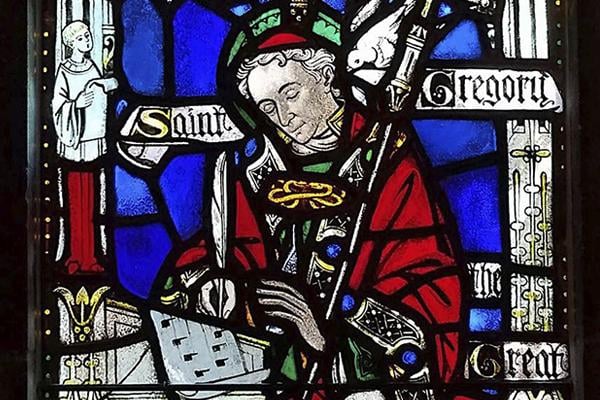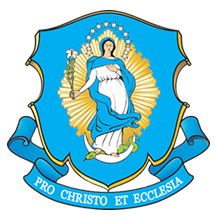
A religious superior should be "the model for everyone ... devoted entirely to the example of good living ... able to water the arid hearts of his neighbors with the streams of doctrinal teaching.”
By Kimberly Bruce
The first monk to be elected Pope in the Catholic Church was the renowned “Physician of Souls,” St. Gregory the Great, Doctor of the Church (feast day: Sept. 3).
Born the son of a wealthy patrician in Rome in 540 A.D., St. Gregory came from a remarkably holy family: His mother (St. Silvia) and two aunts (Sts. Tarsilla and Emiliana) are also canonized saints. From his family line come two other popes as well: his great, great grandfather, Pope Felix III (483-492), and Pope Agapetus (535-536).
From monk to pope
A renowned rhetorician, scholar. and lawyer, St. Gregory began his public life in 572 as prefect of the City of Rome. Not long after, wishing to be a contemplative, he decided to become a monk. However, at age 38, he was obligated to leave behind his beloved monastic life to be ordained as one of Rome’s seven deacons by Pope Benedict I.
In 589, upon Pope Pelagius II’s death, St. Gregory was chosen to succeed him. Even though he did not wish to be leader of the Church, nor to never return to monastic life, he dutifully conceded, elected in 590.
Plague and pestilence
Pope Gregory’s entire service to the Church took place amidst dreadful times in Rome. Death had devasted the metropolis with floods, a plague, and pestilence. Streets were deserted and commerce was at a standstill. The Holy Father himself was not in good health, either. He suffered from indigestion, gout, and fever (some of these may have been due to his harsh ascetical practices), which only worsened as he aged.
The pontiff’s pastoral care for his flock, however, was legendary, and his greatest joy in ministry was as, in his words, “physician of souls.” He released Liber pastoralis curae (Book of Pastoral Rule), in which he states that one’s superior in the religious life should be "the model for everyone ... devoted entirely to the example of good living ... able to water the arid hearts of his neighbors with the streams of doctrinal teaching.”
Pope Benedict XVI, in his General Audience on June 4, 2008, shared that St. Gregory “was profoundly convinced that humility should be the fundamental virtue for every Bishop, even more so for the Patriarch ... He wanted to be — and this is his expression — servus servorum Dei [servant of the servants of God].”
As pope, St. Gregory is perhaps best remembered for sending forth St. Augustine of Canterbury to England on a mission in the year 595 to convert the pagan Anglo-Saxons.
Man of mercy
Saint Gregory was also a man of mercy. He paid the ransom for citizens held captive by the Lombards; bought grain for those in need; aided priests; and worked to ensure the Church’s goods were managed correctly, in accord with justice and mercy.
A spirit-filled writer known as the “Father of Christian Worship,” St. Gregory wrote extensively, including the Book of Morals, a commentary on the biblical Book of Job; Homilies on Ezekiel; Homilies on the Gospel; and Dialogues.
R.A. Markus, author of Gregory the Great and His World, depicts St. Gregory’s keen perception as to the ways of the world “concealing the heart with stratagems, veiling meaning with verbiage, proving false to be right and true to be false,” where “perversity of mind is called urbanity,” and where “the wisdom of the just is scoffed at.”
A famous story about St. Gregory was recorded by Peter the Deacon (Vita, xxviii). While the pope was dictating Homilies on Ezekiel to his secretary, a veil was drawn between the two of them. Because the pope would remain quiet for such long moments, his secretary made a hole in the veil to look through to the pope.
The secretary beheld a dove – the Holy Spirit – seated upon the pope’s head with its beak between his lips. When the dove’s beak withdrew, the pope would speak, and the secretary would take notes. Whenever the pope became silent again, the secretary observed the dove replacing its beak between the pope’s lips.
"The Great"
Under St. Gregory, respect for the papacy increased. Rome became the recognized capital of Christianity, and the See of Peter was undisputedly the supreme authority in the Church.
Saint Gregory died on March 12, 604, and was immediately canonized upon his death. He has the distinction of being among the first four Doctors of the Church, with Sts. Ambrose, Augustine, and Jerome.
Moreover, he is one of only three popes to be hailed as “the Great” due to their success as both spiritual rulers and writers: the others are Pope St. Leo I (440-461) and Pope St. Nicholas I (858-867). And many think that Pope St. John Paul II may be officially called "The Great" one day.
Pope St. Gregory the Great, pray for us!
{shopmercy-ad}
















